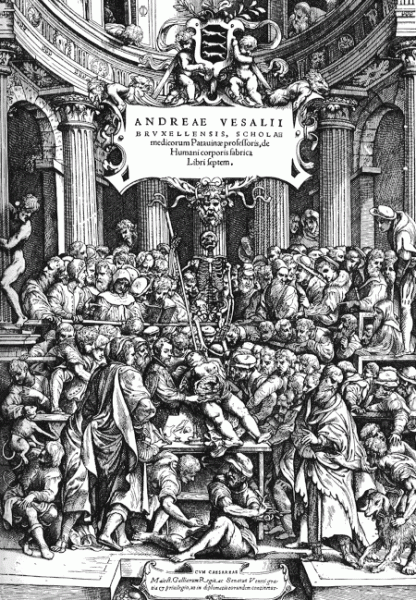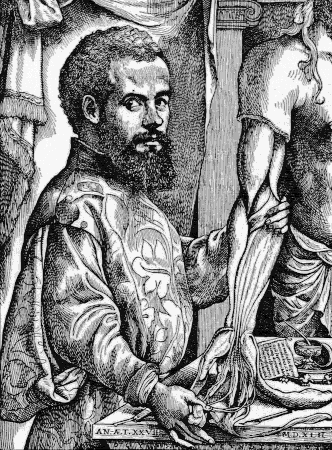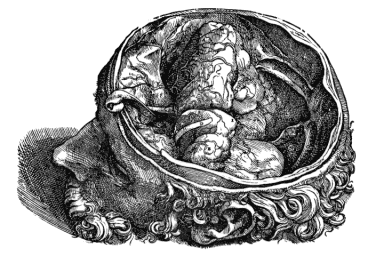Andreas Vesalius
Today, a young man changes medicine. The University of Houston's College of Engineering presents this series about the machines that make our civilization run, and the people whose ingenuity created them.
We don't usually think of Shakespeare when we think of the Renaissance. Yet he was its creature just as surely as Leonardo da Vinci was. The Renaissance brought the focus of art and science right down on the human occupants of this world. Shakespeare, the quintessential humanist, reflected that view when he said, "Man is the measure of all things."
And Renaissance artists measured man in a detail that was unprecedented. Leonardo was far better informed on human anatomy than the physicians of his day. Renaissance fascination with humanity and the human lot resulted in an intensely detailed study of our own mechanical makeup. Kenneth Clark reads through Leonardo's notebooks and says,
One is absolutely worn out by his energy. He won't take yes for an answer. He can't leave anything alone.
Renaissance artists were propelled by this craving to know and understand; but Renaissance physicians did little more than rediscover the Roman anatomist Galen. In a typical class, a professor read 1300-year-old Galenic texts from a lectern. On a table below, a barber cut pieces from a cadaver and a demonstrator showed them around. The relation of the crude work below to the classic Latin text was never very precise.
Into this world stepped a 19-year-old medical student named Andreas Vesalius. His frustration got the best of him by his third dissection. He took the knife from the barber and went at the cadaver himself. By the age of 28, now the leading anatomist of his age, he produced the first modern text on the subject.
The title was On the Workings of the Human Body. It came out in 1543, the same year Copernicus published his treatise on the solar system. Vesalius understood what artists had been doing, and he turned to a student of Titian for sumptuous illustrations -- rich, detailed cutaway drawings.
Vesalius began as an admirer of Galen's methods, but in the end his text had to include over 200 corrections of Galen's work. The importance of the book was immediately clear. In no time, Galenic physicians poured out their bile on Vesalius. After six months he had such a bellyful of their attacks that he burned his remaining notes and went off to work as a court physician.
He did little more with his life, but his anatomy text signaled the return to experimental science and reset the entire center of gravity of medicine. More than that, it put the human soul and human values back into the gruesome study of the human body.
I'm John Lienhard, at the University of Houston, where we're interested in the way inventive minds work.
(Theme music)
Nuland, S.B., Doctors: The Biography of Medicine. New York, Vintage Books, 1988.
Clark, K., Civilisation: A Personal View. New York: Harper and Row, 1969, Chapters 4 and 5. (This is also available on videotape and film.)
For more on Vesalius's wood blocks, see Episode 956.

Vasalius' frontispiece showing a 16th century dissection theatre. In the second edition, he had the plate redone with his own face on the barber surgeon doing the dissection

Vasalius doing a dissection

Vesalius shows a the dissection of a very human skull
(Woodcuts from Vesalius' de Humani Corporis Fabrica Libri Septum, 1543)